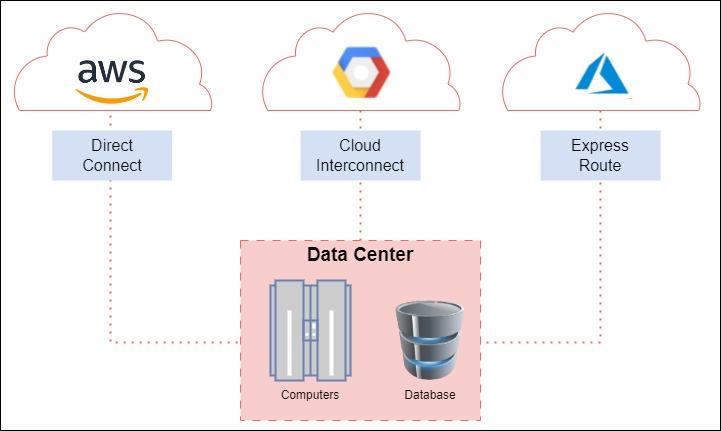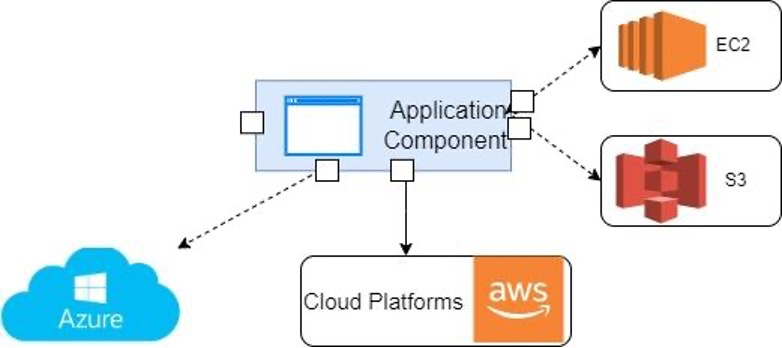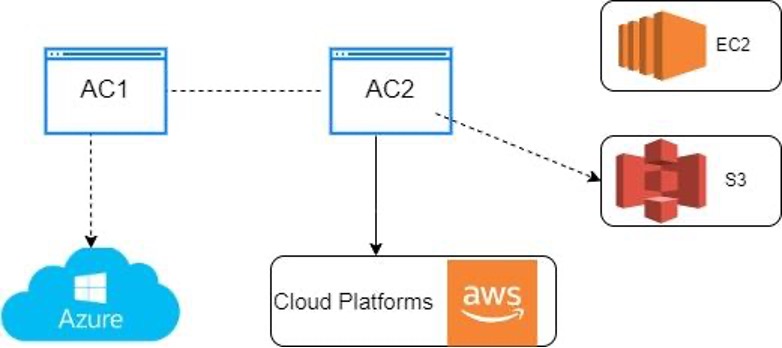Embracing Multi-Cloud Architectures: Benefits, Strategies, and Best Practices
Discuss the strategic benefits of multi-cloud environments and the methods that can help achieve innovation, cost reductions, and operational excellence.
Join the DZone community and get the full member experience.
Join For FreeDigitalization is rapidly transforming data engineering and cloud computing. Businesses constantly seek innovative methods to improve performance, scalability, and resilience.
The most practical approach to achieving these goals is multi-cloud architecture. The key players in cloud data engineering are multiple cloud service providers with state-of-the-art machine learning applications, they are AWS, Azure, Google…
The best combination helps organizations improve their IT services and their computational infrastructure. This methodology helps reduce risk assessment costs as well as improve the scalability of the services provided by these companies. In this article, the strategic benefits of multi-cloud environments are discussed, along with the methods that can help organizations achieve innovation, cost reductions, and operational excellence.

Figure 1: Multi-Cloud Architecture
In a decade, cloud computing progressed at a very high speed, and it redefined new business models with many features like flexibility, accuracy, availability, and ease of doing business. It is also a risky decision to rely on a single cloud service provider due to vendor lock-in or outages or limited availability, availability and reliability, lack of redundancy, limited customization, data sovereignty, and compliance, scalability limitations, cost optimization challenges, security risks, limited innovation, and vendor-specific skills.
These are the obvious reasons to adopt multi-cloud architectures. It should implant the workload distribution model, which is shared across different cloud platforms. It should decrease the dependency challenge and provide full-scale availability options with multiple skill areas to be deployed with many different environmental options. Opting for more than one cloud service instead of a single vendor benefits the organizational business in terms of availability, data sovereignty, scalability, and cost optimization.
Benefits of Multiple Cloud Environments
- Redundancy and reliability: When one cloud service is unavailable, the organization may provide 100% uptime if it opts for a multi-cloud service distribution model.
- Vendor lock-in avoidance: it is easier to switch vendors or use different clouds based on specific needs instead of relying on only one cloud platform.
- Cost optimization: Different pricing models and sets of services are provided by various cloud companies. Organizations therefore choose to pay for the least expensive most cost-effective services from each provider to optimize costs
- Performance optimization: Selecting the best-performing services for individual workloads within multi-cloud environments, improves overall application performance.
Components of a Multi-Cloud Architecture
1. Cloud Infrastructure
Multi-cloud infrastructure refers to using computing, storage, and networking resources from multiple cloud providers like Google Cloud, AWS, or Microsoft Azure. Major components include:
- Compute resources: Different cloud vendors are used as virtual machines (VMs), containers, and serverless functions to achieve better performance at a low cost.
- Storage solutions: There are varieties provided by different suppliers in terms of object, block, and file storage needed for various applications.
- Networking: High-speed secure links are required for continuous communication and data transfer between cloud environments.
2. Cloud Services
In most multi-cloud cases, multiple cloud services are brought together to achieve desired goals.
- Infrastructure as a Service (IaaS): Many companies rely on virtualized computer resources like Amazon EC2, Azure VMs, or Google Compute Engine provided by several vendors.
- Platform as a Service (PaaS): Azure App Service, Google App Engine or AWS Elastic Beanstalk are platforms used for creating, publishing, and maintaining applications.
- Software as a Service (SaaS): Business operations run on the cloud through software solutions offered by Office 365, Salesforce, Google Workspace, and others.
3. Deployment Strategies
Cost efficiency, high-level performance, and resilience are some of the results of effective multi-cloud deployment strategies.
- Hybrid deployments: This means joining facilities located on premises with one or two cloud providers to maintain control and adaptability.
- Multi-cloud deployments: This is when workloads including services are dispersed throughout many cloud platforms so that reasoning can be based on their strengths to avoid vendor lock-in.
- Cloud bursting: This refers to an approach where secondary clouds are engaged for purposes of managing workload expansion from primary clouds during peak periods.
4. Data Management
In data management across multiple cloud environments, consistency, portability, and security are important:
- Data portability: Solutions that enable data to be moved between different cloud providers avoiding the need for significant rework.
- Data consistency: This feature helps the business organization keep the data changes under some control and maintain data consistency to avoid any errors, conflicts, or data inconsistencies.
- Data Backup and recovery: The feature creates data backups to restore the original databases in some unavoidable disasters. It also boosts business continuity.
5. Security Considerations
The multi-cloud systems need an integrated approach for their consistency as well as security:
- Unified security policies: The core of this technique is to adopt and design a unanimous security policy for all cloud services.
- Identity and Access Management (IAM): IAM methods are very effective in improving cloud averments efficiency and upholding user profiles and privileges.
- Encryption at rest and in transit: Encryption is the key to secure the data stored over a cloud platform or it is transmitting from one node to another node.
Multi-Cloud Architecture Designs
The multi-cloud architectures are major contributors to high scalability and reliability. This article aims to provide a guideline for the migration of cloud-based systems to multi-cloud-based architectures. Here are a few commonly known multi-cloud-based architectures and migration strategies.
Cloudification
The codification starts by hosting a single software application or its component on cloud storage. The post-migration activities are then started in a step-by-step fashion, which provides the opportunity to utilize the different cloud services. The services may be distributed across many different cloud architectures for the comparative performance principle.
 The cloud adoption with the multi-cloud adoption strategy, the following sequence of activities may be followed.
The cloud adoption with the multi-cloud adoption strategy, the following sequence of activities may be followed.
- The application is hosted on-site layer which can be used by Amazon S3 (AWS).
- The storage will be on Azure Virtual Machine for processing capabilities.
This technique provides improved availability. The application is re-hosted in several clouds which makes it possible to reduce vendor lock-in risk.
Multi-Cloud Relocation
The architecture places the application component and provides re-hosting on a specific cloud platform. This architecture also simultaneously taps into cloud services from multiple cloud platforms.

The application component C1 is re-hosted in AWS. It is also using the environmental services from Azure when it is migrated from one environment to another environment. It also takes the benefits of Amazon S3 from its storage medium. It also boosted the computational resources from AWS or Azure depending on the flexibilities available in these environments. This approach has several benefits like improved availability since applications are re-hosted across many clouds thus minimizing vendor lock-in risks.
Multi-Cloud Refactor

Application restructured to deploy across multi-cloud platforms for delivering Quality of Service (QoS) on-premise. It means that the more used parts can be deployed and optimized separately, by dividing the application into smaller, more focused components. This method has multiple advantages from ultimate scale and performance, to a variety of options for multi-cloud deployments, and enables fast adoption to changing business or IT. But on-premises applications are often modernized primarily from a technical perspective, without regard to the challenges of managing the multi-cloud environment. As a result, the component-based architecture determined from the bottom up may need to be re-evaluated to address the unique requirements of the multi-cloud setup.
Multi-Cloud Rebinding
A re-architected application is partially deployed across multiple cloud environments, enabling the application to continue functioning by leveraging a secondary deployment in the event of a failure with the primary platform. For instance, if AC1 and AC2 were two application components hosted on-premises before migration, it would be possible for AC1 to remain on-premise while two instances of AC2 are deployed on AWS and Azure for disaster recovery purposes. Therefore, AC1 and these two instances of AC2 can be interconnected through an Enterprise Service Bus (ESB) or service bus. The advantage of this approach is that as unhealthy services regain health, traffic can be seamlessly redirected thus restoring system responsiveness to optimal levels. However, one challenge of this architecture is that it does not guarantee seamless failover causing some periods of downtime during the failover process.
Multi-Cloud Rebinding With Cloud Brokerage
Partial deployment of a re-architected application across several cloud environments. This method enables a secondary deployment to be employed as it takes advantage of cloud brokerage services when the primary platform fails. In this architecture, AC1 is on-premises while two re-architectured instances of AC2 are deployed in AWS and Azure cloud platforms. The three components are integrated by the cloud broker services, which allow for flexibility in selecting from different providers (AWS and Azure cloud platforms). The main advantage of this strategy is that unhealthy services can gain back their health and traffic will be redirected to them automatically thus restoring system responsiveness to maximum levels. However, one problem with this architecture is that it does not promise an uninterrupted failover, hence some downtime may arise during the transfer process.
Multi-Application Modernization
Rebuilding various applications like A1, A2, and AC1 into a portfolio for deployment on a single cloud infrastructure is what constitutes this approach. One of the greatest advantages of this model is its provision of uniform information and policies throughout common parts. Similarly, savings associated with operations as well as maintenance costs for shared components might ensue. Conversely, a lack of business ownership over shared capabilities may impede successful realization and implementation.
Best Practices for Multi-Cloud Architecture
1. Interoperability
This means creating an environment in which different cloud environments can interact and join forces seamlessly. There are a few different solutions that apply here:
- APIs and Middleware. Using APIs as well as middleware solutions, you can ensure that different services of the cloud will be able to interact and exchange any data they need.
- Standardization. If you adopt standardized protocols and interfaces to multiple clouds, you will simplify the process of their integration greatly.
2. Automation and Orchestration
The consistency is maintained by ensuring scalability and automation during the deployment of these services. The configuration and orchestration are also maintained during this process.
- Infrastructure as Code: The scalability is maintained through automation. The provision of cloud resources is implemented by using infrastructure as code tools, a few examples are Terraform and CloudFormation.
The tools like Kubernetes are used to automate the deployment process of the applications. It also provides scalability and manages containerization applications over multiple cloud services.
3. Monitoring and Logging
This successful cloud migration and adoption of multi-cloud architecture is achieved with holistic monitoring capability. This process is further enriched with logging systems that provide visibility into application performance.
The multiple cloud platforms provide many advantages over a single cloud architecture. A few of these advantages are enhanced redundancy, greater flexibility, and improved cost-effectiveness. This technique also puts a few bottlenecks which are mitigated by through planning and risk assessments before this multi-cloud infrastructure transformation. The key components, deployment techniques, data management protocols, security policies, and operational best practices are the core activities while a business goes through a multi-cloud architecture transformation. The guidelines provided in this article provide a starting point for thought process initiation to developers. The tools to build manage and scale the whole process must be reliable and well-managed throughout this transformation.
Conclusion
Businesses run online now and cloud providers claim you can go global by migrating to the cloud in a minute! In a changing digital society, the world is connected daily and cloud providers can go down anytime no matter the infrastructure they have, the solution is to go multi-cloud.
Opinions expressed by DZone contributors are their own.

Comments